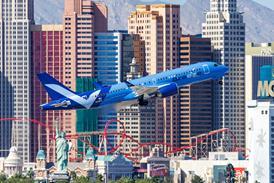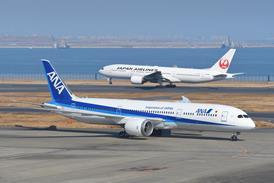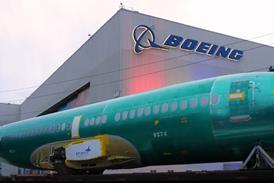While traffic suffered everywhere last year, there have been winners as well as losers in the shape of the low-cost carriers and some continuing robust growth around the Asia-Pacific region.
It is indisputable that the events of 11 September and their aftermath radically changed the course of the whole airline industry in 2001. The pre-crisis world now seems to belong to a very different era. Yet despite the chaos of the last four months, the industry's year-end traffic results nevertheless reveal some underlying trends that continue to shape the industry as it strives for recovery.
Not least are moves, by those outside the region, to reduce reliance on the North American market, which until last year had proved the powerhouse of world growth. A sharp slowdown in the US economy over the first half of 2001 had put that trend in play well before disaster struck. For example, by mid-year there was a real prospect that traffic across the North Atlantic would fall for the first time in the decade. The terrorist attacks made it an inescapable reality.
"The bigger the exposure to the USA, the bigger the damage," said Cathay Pacific's David Turnbull late last year, speaking from the relatively safe distance of the annual meeting of Asia-Pacific airline chief executives.
Looking across the ranking for the world's top 200 passenger carriers, that rule of thumb would seem to hold true. They ended 2001 with a 2.7% drop in passenger traffic flown - only the second global decline recorded in modern times. Yet while North America ended the year down a full 5% and Europe's carriers posted a 2.4% fall, Asia-Pacific managed to keep traffic virtually at break-even and actually saw a modest rise in passenger numbers.
China's booming domestic economy, in particular, appears to have largely protected its operators from the twin storms of downturn and terrorism. The Chinese mainland carriers posted a collective traffic increase of 10% over the year. Hong-Kong's Dragonair was also up by close to 40% thanks to its rights to serve the mainland, again demonstrating the power of China's domestic market.
Furthermore, the country's demand for air services is unlikely to stop growing soon, as China's accession to the World Trade Organisation is expected to fuel even greater economic growth spurred by its still-developing economy.
Others in Asia-Pacific have continued to look to their own region for growth and downgraded reliance on the USA. By this summer, seat capacity on the US-Asia market was down by around 9%, with many of the formerly transpacific-dedicated aircraft now used to shuttle passengers around Asia. IATA chief economist Peter Morris cites growth on the Japan-Korea and Japan-China markets as examples. So although Asia-Pacific's carriers have seen their traffic virtually return to pre-crisis levels in the first half of 2002, the transpacific market is not now expected to recover its pre-crisis volumes until as late as 2005.
European carriers too are redirecting capacity. Air France, for instance, reduced its capacity on the North Atlantic by close to 14% this summer, electing to fly its aircraft to destinations in Africa and to take up the long-haul markets formerly dominated by failed neighbours Swissair and Sabena. Accordingly, Morris says that transatlantic traffic levels are not expected to regain their 2000 levels until next year at the earliest.
Low-cost growth
While others have suffered, the crisis has provided a springboard for the new breed of low-fare operators, with JetBlue as its poster child. The East Coast start-up doubled its traffic in its second year of operation and in the process leap-frogged up the rankings to make it into the top 100. There it joins Europe's Ryanair, Go and easyJet, as well as Canada's fast-growing WestJet. Australia's new Virgin Blue operation is also not lagging far behind. Led by JetBlue, the sector dominates the 2001 list of fastest-growing operations.
Spurred on by a giant contribution from Southwest Airlines, the low-cost independents accounted for around 120 million passengers last year. That representing more than 7.5% of the world total - and is rising.
Ryanair has made little secret of its ambitions, opening the year with a firm order for 100 new Boeing 737s and options for a further 50. The ambitious Irish carrier also made good its pledge to take its successful formula to continental Europe when it opened a hub in Hahn, Germany. A need to find destinations for its new aircraft, as well as traffic success at Hahn, has the company pledging to open a new base every year for the next two to three years. In addition to a possible second hub in Germany, Ryanair indicates it is weighing the merits of cities in Italy, France and Scandinavia for its 2003 addition.
EasyJet too has not been short of ambition. With the recent purchase of Go it has emerged as Europe's largest low-cost operator and if it takes up the option to add Deutsche BA to the list, it will be within an ace of joining the top 50 carriers.
Meanwhile, Southwest continues to forge ahead in the US market. Having already established operations in every region of the country, it has increased its average stage length as a means to continue growing. In May, it announced a first transcontinental flight, which connects Baltimore-Washington airport and Los Angeles two times daily. If successful, these flights will bring the carrier into even greater competition with the country's struggling majors.
Launch pad
JetBlue, which began its own transcontinental service and opened a mini-hub in Long Beach, California, has used its New York Kennedy base as a launch pad for huge traffic gains. On a less dramatic growth curve, AirTran Airways continues to prosper at Atlanta despite the presence of Delta Air Lines, and Denver-based Frontier Airlines is making gains.
The low-cost model having been proved in Europe is now being tried in new arenas. WestJet and Virgin Blue have brought profitable competition to the Canadian and Australian industries, markets that would otherwise be natural monopolies for those countries' flag carriers. And now carriers Cebu Pacific and Air Asia are attempting to apply the formula elsewhere in the Asia-Pacific region.
A final growth trend, which emerges from the rankings, centres on those carriers that have been able to pick up traffic shed after the demise of some major airline names.
Air France has been among those to benefit in Europe from the struggles and ultimate failure of Swissair and Sabena, as well as domestic rival AOM/Air Liberté. In South America, the failure of Transbrasil left domestic competitors such as TAM to pick up its market share.
Meanwhile, in Australia, the biggest problem for Qantas seemed to be how it could quickly fill the capacity void left by the departure of bankrupt Ansett and the struggle of Air New Zealand. Such gains seem to make a case the for argument that airline economics, at least for mature players in mature markets, may well be a zero-sum game after all.
Source: Airline Business























